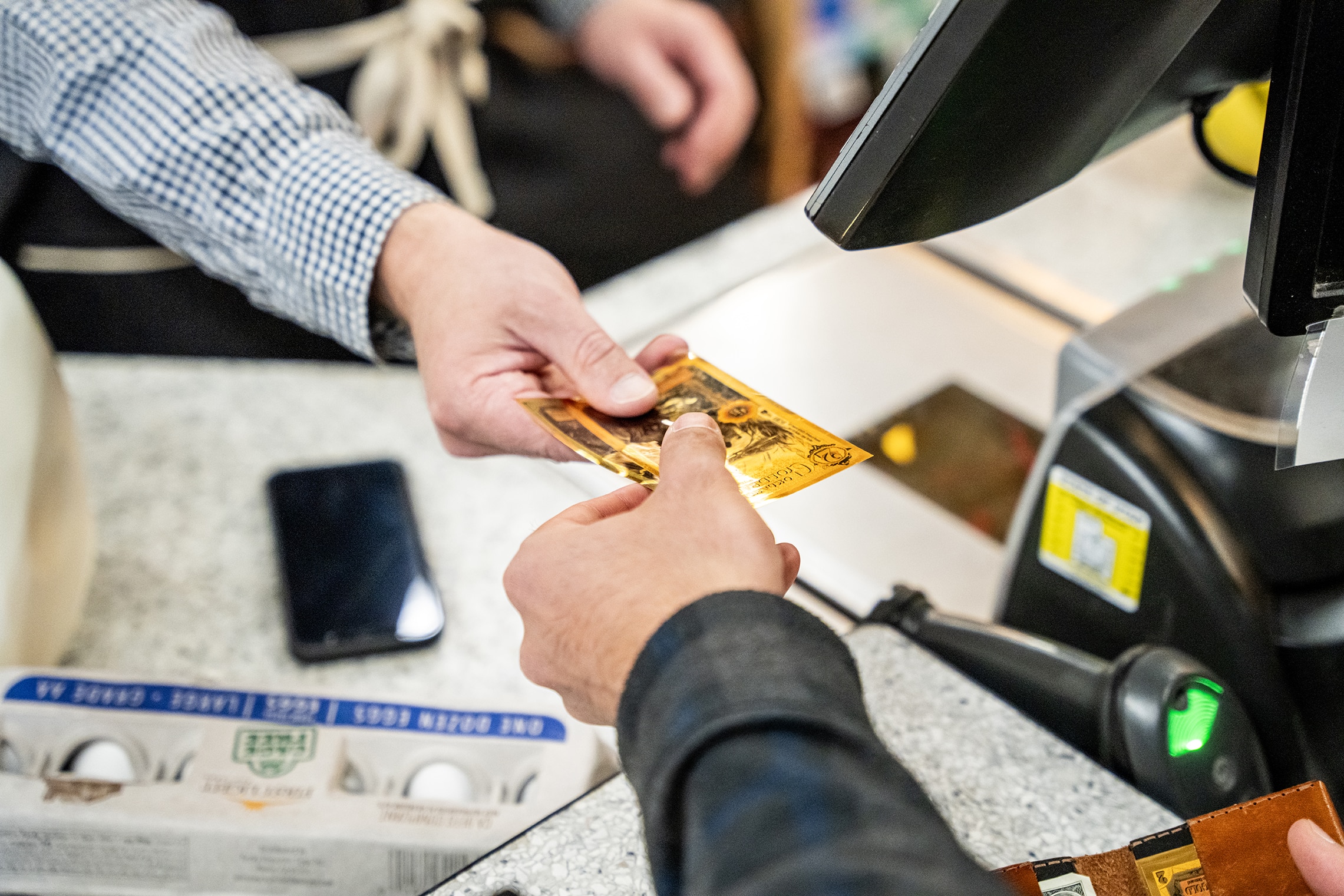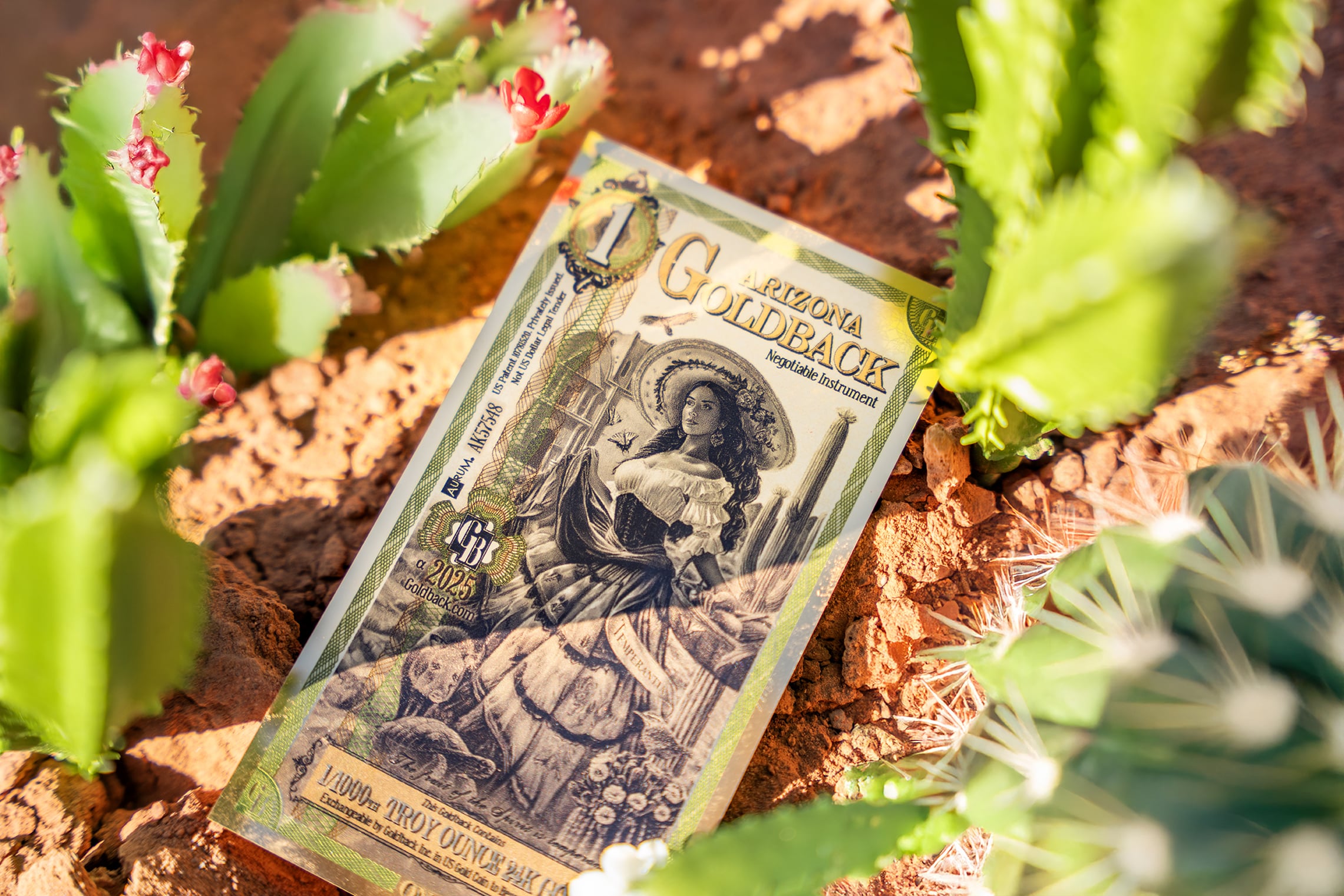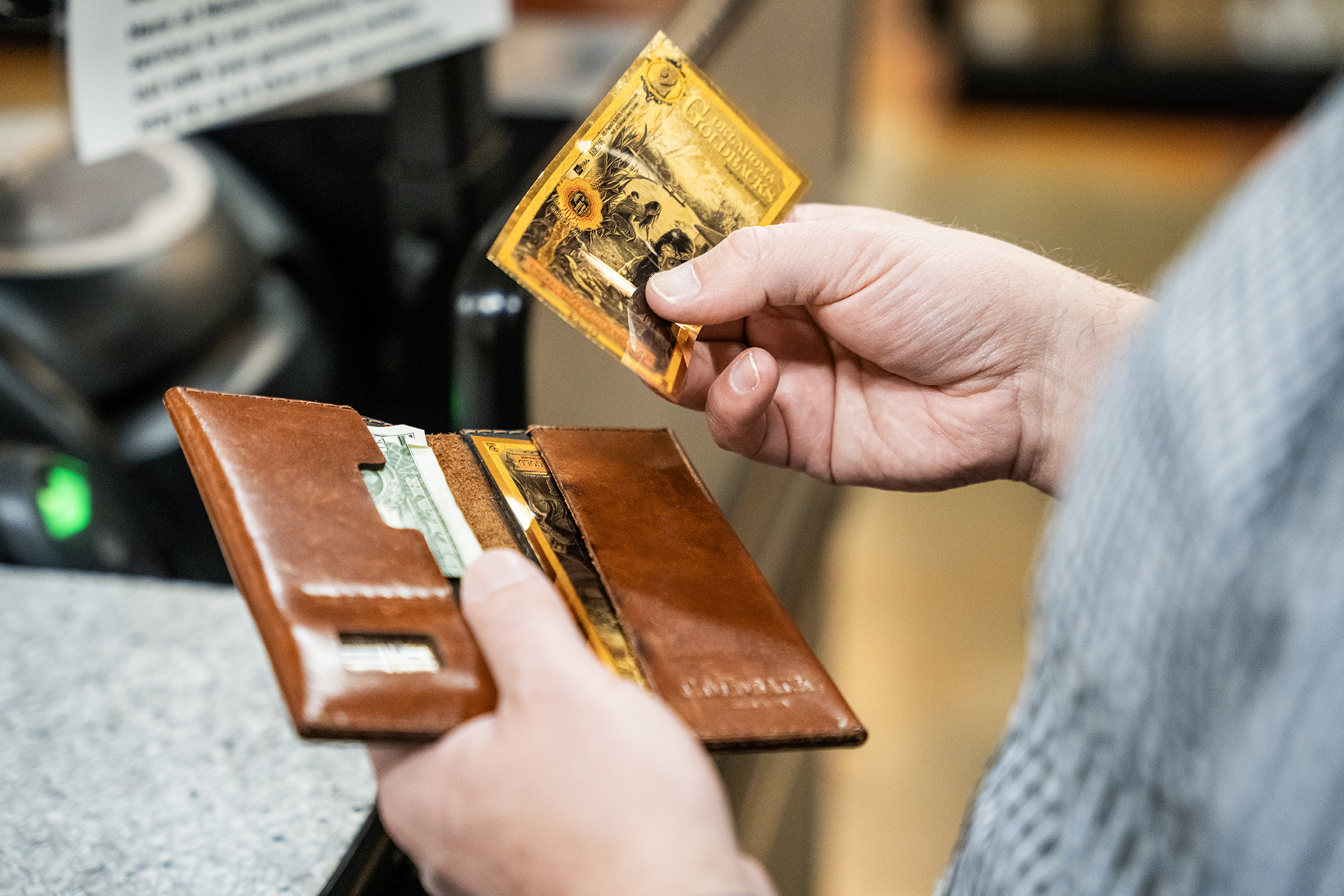
The Goldback Newsroom and Blog
Stay informed with the latest news, updates, and announcements from Goldback Inc. Discover everything from new product releases to exclusive insights on Goldback’s alternative currency and gold currency solutions.

November 7, 2025
Record-Breaking October: 238 New Merchants, $8.81 Exchange Rate
October was a huge month for Goldbacks and the GILD (Goldback Interchange & Local Development) […]

November 3, 2025
Start Preordering Arizona Goldbacks Now!
Preorders for Arizona Goldbacks are officially open! Beat the crowds and secure your stack before […]

October 24, 2025
What Are Some Differences Between Gold Coins, Gold Bars, and Goldbacks?
Throughout history, gold has taken many forms: ornate coins in ancient empires, investment bars sitting […]

October 16, 2025
The Dallas Goldback: Everything You Need to Know About Texas’ Latest Goldback
Goldbacks have arrived in Dallas, TX! Thanks to a large sponsor, you may start seeing […]

October 9, 2025
Goldbacks vs. Cryptocurrency: 4 Key Differences You Should Know
With the rise of Goldbacks, many people wonder how they compare to digital currencies. While […]

October 3, 2025
How Do Goldbacks Work? A Beginner’s Guide
Goldbacks are a local, gold-backed currency designed for everyday use. If you’re curious about how […]

September 26, 2025
5 Benefits of Using Alternative Currency Instead of Cash
They say cash is king, but alternative currencies are challenging its reign. From digital coins […]

September 19, 2025
How Gold Maintains Its Value Over Centuries
Gold has fascinated humans for millennia. Its rarity and beauty captivated ancient civilizations, and its […]

September 12, 2025
Goldbacks Hit Record High as Gold Continues Its Momentum
Recent trends in the gold market are sending a clear message: gold is in demand […]

September 5, 2025
Announcing the 9th Goldback State and the Arizona Release Date!
The 9th Goldback Series A new Goldback series is coming Q1 of 2026! Watch the […]

August 28, 2025
Decentralized. Divisible. Durable. Gold You Can Spend.
By Ben Patty What if money didn’t require permission? If you already own Bitcoin or […]

August 22, 2025
Sign Up a Merchant, Get a Free Silverback Silver Dragon!
A huge part of developing a new Goldback series is building up the merchant network […]

August 12, 2025
Celebrating 6 Years of Goldback!
This summer, we’re celebrating six years of Goldback. It was six years ago in July […]

August 8, 2025
July Recap: 190 New Merchants and Vernal GILD Kick-Off!
There’s been a lot of buzz around the new Oklahoma series, and that excitement has […]

August 1, 2025
Preorders for Oklahoma Goldbacks Are Open!
Starting today, you can officially preorder Oklahoma Goldbacks! Get ahead of the rush and secure […]
Stay Connected
Don’t miss a beat! Fill out the form below to stay updated on Goldback’s gold currency and innovative currency alternatives.
